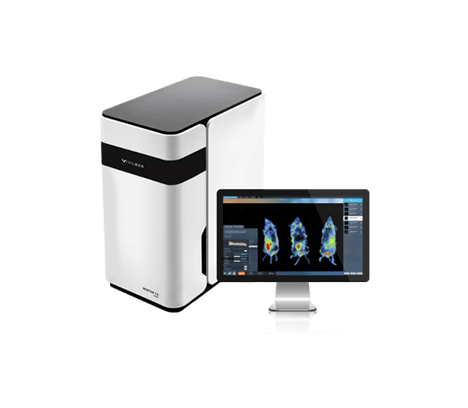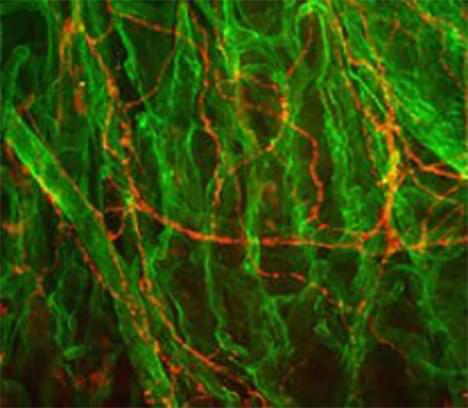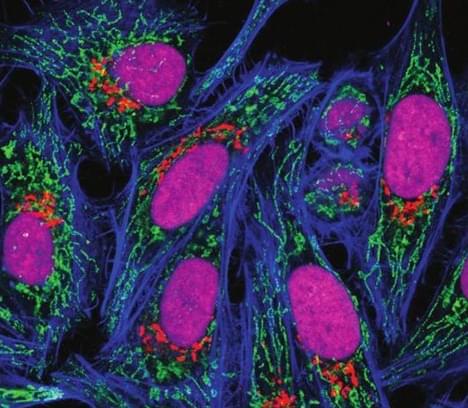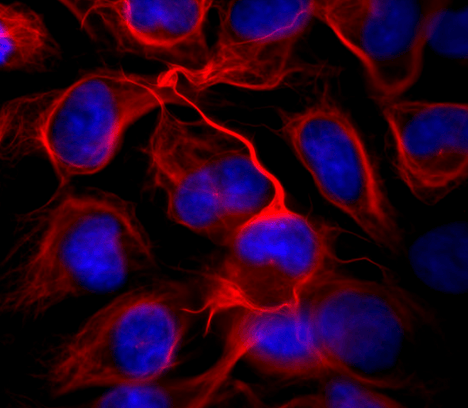Featured Products
Our Promise to You
Guaranteed product quality, expert customer support

Fluorescent Dyes

In Vivo Imaging Reagents
Creative Bioarray provides a large number of luciferase products and fluorescent dyes. Learn more

Fluorescent pH Probes & Ion Indicators
Creative Bioarray offers a broad range of pH probes and calcium indicator dyes.... Learn more

Fluorescent Labeling Dyes
Creative Bioarray offers the most comprehensive list of fluorescent dyes. Learn more

Fluorescent Cellular Stains
Creative Bioarra y offers an integrated set of cell stain products... Learn more
Fluorescent Dyes
Fluorescence, the absorption and reemission of photons with longer wavelengths, is one of the miraculous phenomena of nature. Its discovery and utilization has a major impact on biological and biomedical research, as it allows researchers not just to visualize normal physiological processes with high temporal and spatial resolution, to detect multiple signals simultaneously and track individual molecules in vivo, to replace radioactive assays when possible, but also to shed light on many patho-biological processes of underlying disease states.
Amine-reactive fluorescent dyes
Amine-reactive dyes, also known as LIVE/DEAD fixable dead cell stains, are a class of viability dyes suitable for identifying dead cells in a fixed sample. These dyes pass through the cell membranes of dead cells and react with free amines in the cytoplasm. Live cells exclude these dyes because their cell membranes are intact. It is worth noting that the reaction is irreversible, so when cells are fixed and permeabilized (as with intracellular staining procedures), the bound dyes remain associated with the dead cells. Since amine-reactive dyes are fluorescent under laser excitation, dead cells can be identified by flow cytometry.
Amine-reactive fluorescent dyes are also available in a variety of colors. Succinimidyl ester (SE) compounds are the most commonly used reagents for labeling amines due to its ease of use and stability of the labeled products. SE reagents can readily react with primary and secondary aliphatic amines to form a highly stable amide bond. Labeling of water-soluble amine-containing compounds such as peptides, proteins, and oligonucleotides are typically carried out in an aqueous solution with pH of 8.0-9.0. Amine labeling can also be carried out in an organic solvent for compounds that have low water solubility.
Thiol-reactive fluorescent dyes
Since free thiol (SH) groups, also known as mercapto groups, are not present as abundant as amino groups in most biopolymers, thiol-reactive reagent usually provides a mean of selectively modifying a protein at a specific site. Thus, thiol-reactive dyes are commonly used to develop probes for the detection of conformational changes, assembly of multi-subunit complexes and ligand-binding processes. The primary target of thiol-reactive probe is the cysteine residue, but in mammalian proteins, the occurrence frequency of cysteine target is less than lysine target, which are labeled by the amine-reactive reagents. Some proteins and many peptides have only a single cysteine residue, allowing site-specific labeling with thiol-reactive probes. In proteins with multiple cysteine residues, single-cysteine variants can be obtained by site-directed mutagenesis without significant disrupting the structure or function of the native protein. Site-specific modification is particularly important for labeling small proteins where the activity or binding affinity of the conjugate is paramount, thiol-reactive labeling is superior to the amine-reactive labeling in such cases.
Carbonyl-reactive fluorescent dyes
Fluorescent hydrazides are carbonyl-reactive fluorescent labeling dyes that react with aldehydes or ketones to form stable oxime bonds under mild conditions without the need for a reducing agent. Fluorescent hydrazides can be used to label abasic sites in damaged DNA or carbonyl groups resulting from protein oxidation. They can also be used to label carbohydrates or glycoproteins to form carbonyl groups after oxidation of the carbohydrates. The reaction is fast and can be further accelerated by adding aniline as a catalyst. In addition, hydrazides are low molecular weight, cell membrane-impermeant, aldehyde-fixable molecules that can be used as cell tracers, e.g., by loading into cells by microinjection, infusion from patch pipette, or uptake induced by pinocytic cell-loading reagents.
Visualization of cellular structure and function, together with cellular metabolism and metabolites, are critical to generate new knowledge for cell biology and to define the mechanisms of disease. Creative Bioarray develops reagents aimed at helping you to answer these important scientific questions. This detailed overview may help you decide which dyes to choose for your individual experiment.

